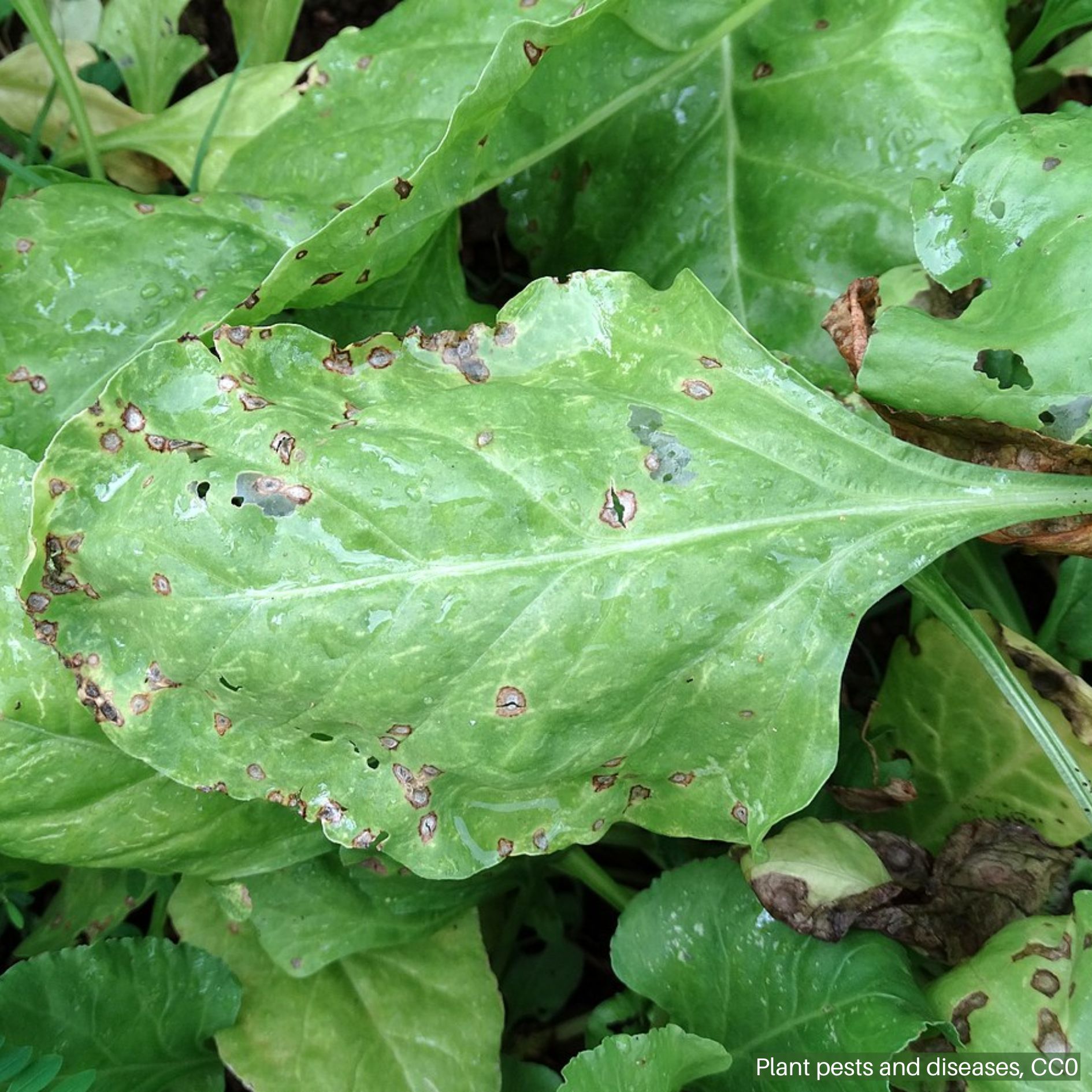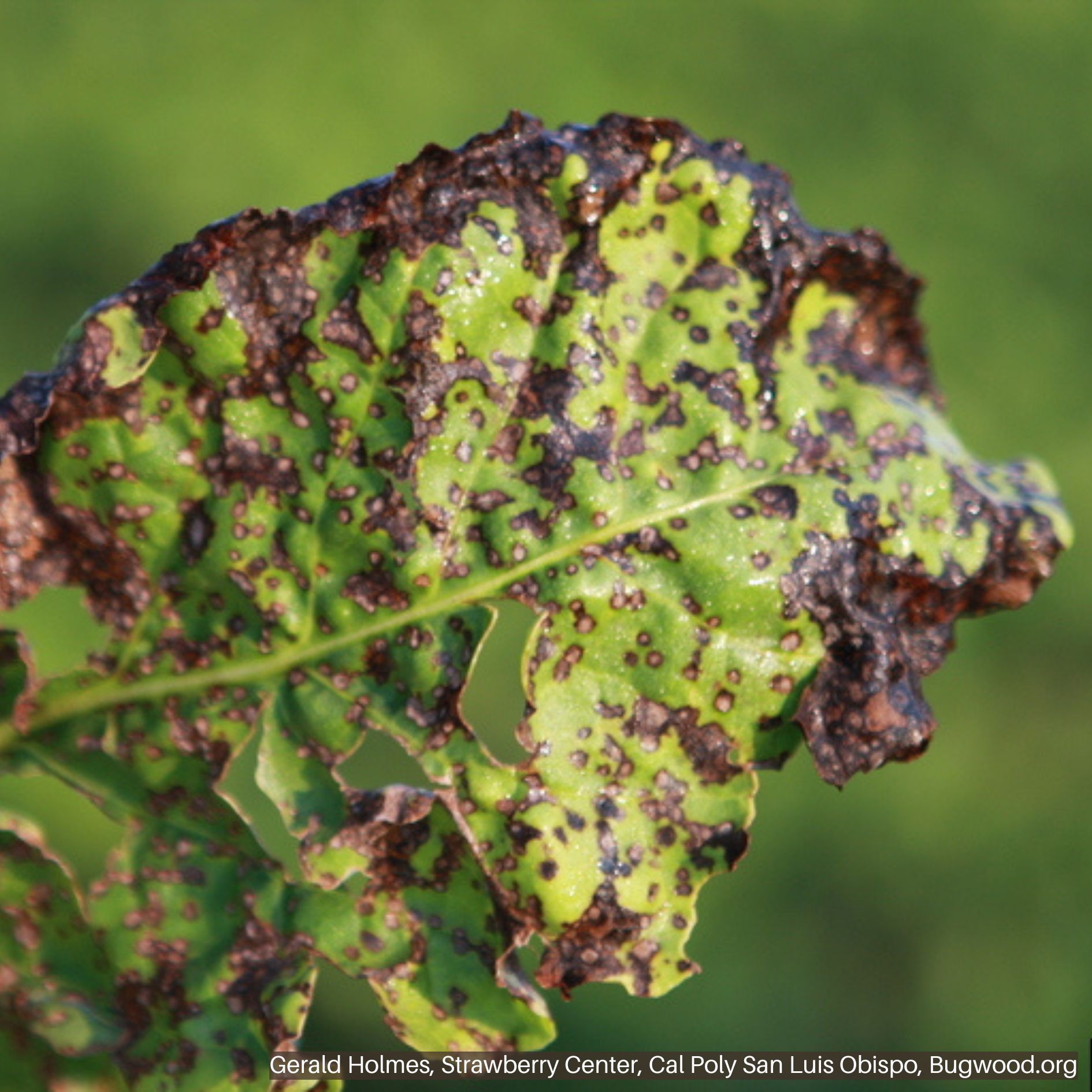Cercospora Leaf Spot
 Necrotic lesions with reddish border
Necrotic lesions with reddish border
 Cercospora leaf spot symptoms on spinach
Cercospora leaf spot symptoms on spinach
 Heavily infected sugar beet leaf
Heavily infected sugar beet leaf
HOSTS
- Swiss Chard
- Lettuce
- Spinach
- Beets
DESCRIPTION
Cercospora leaf spot is caused by the fungus Cercospora beticola. It most commonly affects beets but can also infect lettuce, spinach, and weeds that can act as alternative hosts.
BIOLOGY
Cercospota beticola can be introduced to an area through infected seeds, contaminated plant debris, or weeds. The fungi overwinters in infected plant debris, and when the weather warms, release spores to infect new hosts.
A spore enters through the plant’s stomata when it reaches a host. Once within the host, the fungus will rapidly reproduce, colonizing the inner tissue. C. beticola will release toxins that destroy host cells, causing foliar lesions. At the center of the lesions, the fungus will develop spore-producing bodies, called pseudostromata. These spores will spread the disease short distances using wind and splashing water.
The spread and development of C. beticola is heavily impacted by temperature and humidity. Warm day and night temperatures, high humidity, or wet leaves are optimal conditions for disease development.
SYMPTOMS
- Small, tan circular lesions with brown or purple borders
- Lesions will merge together over time, impacting large sections of foliage
- Lesions first appear on older leaves before progressing to newer growth
- Black dots in the center of lesions, visible with a hand lens (X10)
- Yellowing or wilting foliage
GENERAL MANAGEMENT
- Use certified disease-free seeds
- Rotate crops with non-susceptible crops
- Avoid watering practices, such as overhead irrigation, that result in wet soil and foliage for prolonged periods
- Remove weeds and volunteer plants that can serve as alternative hosts for the disease


